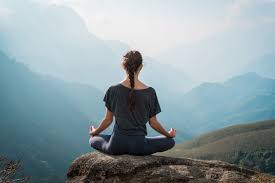Outline
1. Introduction
2. Understanding Holistic Wellness
3. The Mind-Body Connection
4. Benefits of Holistic Wellness Practices
5. Popular Holistic Wellness Practices
6. Integrating Holistic Practices into Daily Life
7. Holistic Nutrition
8. Mental Health and Holistic Practices
9. Physical Health and Holistic Practices
10. Emotional Health and Holistic Practices
11. Spiritual Health and Holistic Practices
12. Creating a Holistic Wellness Routine
13. Challenges and Misconceptions
14. Success Stories
15. Conclusion
16. FAQ
Main Content Section
1. Introduction
Holistic wellness is more than just a trend; it’s a lifestyle that embraces the interconnectedness of mind, body, and spirit. But what exactly does it entail, and how can you incorporate it into your daily routine? Let’s dive in and explore the world of holistic wellness practices.
2. Understanding Holistic Wellness
Holistic wellness is an approach to health that considers the whole person. It’s not just about treating symptoms but addressing the root causes of health issues by looking at physical, mental, emotional, and spiritual well-being. For a deeper dive into holistic health, check out this comprehensive guide
3. The Mind-Body Connection
Ever noticed how stress can lead to physical ailments like headaches or stomach issues? This is the mind-body connection at work. Holistic wellness practices aim to harmonize this connection, promoting overall health. Learn more about the mind-body connection here
4. Benefits of Holistic Wellness Practices
From reducing stress to improving sleep, holistic wellness practices offer a myriad of benefits. They can enhance your quality of life by fostering a balanced and healthy lifestyle. Discover the benefits of holistic wellness in this article
5. Popular Holistic Wellness Practices
5.1 Yoga
Yoga combines physical postures, breathing exercises, and meditation to promote flexibility, strength, and mental clarity. For beginners, this guide can help.
5.2 Meditation
Meditation helps calm the mind, reduce stress, and improve focus. It’s a practice that can be easily integrated into daily life. Explore different meditation techniques here
5.3 Aromatherapy
Using essential oils for therapeutic benefits, aromatherapy can help with relaxation, mood enhancement, and even pain relief. Learn about the best essential oils for aromatherapy here
5.4 Acupuncture
An ancient Chinese practice, acupuncture involves inserting thin needles into specific points on the body to balance energy flow and promote healing. For more on acupuncture, visit this resource
5.5 Tai Chi
Tai Chi is a form of martial arts known for its slow, deliberate movements and focus on breathing and meditation, making it excellent for stress reduction and physical health. Discover the benefits of Tai Chi here
6. Integrating Holistic Practices into Daily Life
Incorporating holistic practices into your daily routine doesn’t have to be overwhelming. Start small by adding a few minutes of meditation or a short yoga session to your day.
7. Holistic Nutrition
7.1 Whole Foods
Eating whole, unprocessed foods is a cornerstone of holistic nutrition. These foods provide essential nutrients that support overall health.
7.2 Herbal Supplements
Herbal supplements can complement your diet and provide additional health benefits. Always consult with a healthcare provider before starting any new supplement.
7.3 Hydration
Staying hydrated is crucial for maintaining bodily functions and overall health. Aim to drink plenty of water throughout the day.
8. Mental Health and Holistic Practices
Holistic practices like meditation and yoga can significantly improve mental health by reducing stress and anxiety and promoting a sense of calm and well-being.
9. Physical Health and Holistic Practices
Regular physical activity, balanced nutrition, and practices like acupuncture and Tai Chi can enhance physical health, improve energy levels, and prevent chronic diseases.
10. Emotional Health and Holistic Practices
Holistic wellness also addresses emotional health. Practices like journaling and mindfulness can help manage emotions and improve emotional resilience.
11. Spiritual Health and Holistic Practices
Spiritual health is about finding purpose and meaning in life. Practices like meditation, yoga, and spending time in nature can nurture your spiritual well-being.
12. Creating a Holistic Wellness Routine
Creating a holistic wellness routine involves setting realistic goals and gradually incorporating various practices into your daily life. Consistency is key to reaping the benefits.
13. Challenges and Misconceptions
There are many misconceptions about holistic wellness, such as it being too time-consuming or expensive. Addressing these challenges can help you stay committed to your wellness journey.
14. Success Stories
Hearing about others’ success with holistic wellness can be incredibly motivating. Look for testimonials and stories that inspire you to continue your practice.
15. Conclusion
Holistic wellness is a journey towards a balanced and healthy life. By integrating these practices into your routine, you can achieve a harmonious state of well-being.
16. FAQ
Q1: What is holistic wellness?
A: Holistic wellness is an approach to health that considers the whole person, including physical, mental, emotional, and spiritual well-being.
Q2: How can I start practicing holistic wellness?
A: Start small by incorporating practices like meditation, yoga, and healthy eating into your daily routine.
Q3: Are holistic wellness practices expensive?
A: Not necessarily. Many practices, such as meditation and yoga, can be done at home with minimal cost.
Q4: Can holistic wellness help with chronic illnesses?
A: While holistic wellness can support overall health, it should complement, not replace, conventional medical treatments. Always consult with a healthcare provider.
Q5: How long does it take to see benefits from holistic wellness practices?
A: The benefits can vary, but many people start to notice improvements in their well-being within a few weeks of consistent practice.
